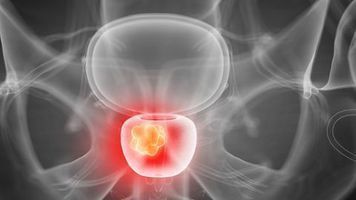Publication
Article
Urology Times Journal
Artificial urinary sphincter: 50 years of evolution and positive outcomes
Author(s):
In this interview, Andrew C. Peterson, MD, MPH, discusses the development of the artificial urinary sphincter.
Andrew C. Peterson, MD, MPH

Urology Times® is celebrating its 50th anniversary in 2022. To mark the occasion, we are highlighting 50 of the top innovations and developments that have transformed the field of urology over the past 50 years. In this installment, Andrew C. Peterson, MD, MPH, discusses the development of the artificial urinary sphincter (AUS). Peterson is a professor of surgery at Duke University in Durham, North Carolina.
Please provide an overview of the development of the AUS.
The artificial urinary sphincter as we know it today really is an evolution of many very small changes that started with the original device that was developed in the 1960s. It was developed at both the University of Minnesota as well as down in Texas by Gerald Timm, PhD; F. Brantley Scott, MD; and William E. Bradley, MD. There were several iterations of this device that had multiple pumps and multiple balloons that all led to development of the artificial sphincter that we basically know today. It has 3 components: the pressure-regulating balloon that comes in different sizes, the cuffs that come in different sizes, and then of course, the pump that goes down into the scrotum in men or labia in women. It's interesting; the very first device of this type was placed in 1972 in a series of 5 men in Houston. The outcomes were quite good and were published in the Journal of Urology. Since 1972, there have been very small changes to the 3-piece artificial urinary sphincter that we know today.
In the late 1980s, the cuff was redeveloped to make it narrower to decrease erosion rates and increase longevity. In the late 1990s, the device was coated with InhibiZone—that's the proprietary name for the combination of antibiotics that consists of rifampin and minocycline. That was based on data brought over from the inflatable penile prosthesis [IPP] literature that showed decreased infection rates in the IPP patient population when this combination was used. So the company started utilizing that with the artificial sphincter.
Then, in 2010, there was the development of the 3.5-cm cuff, which solved a lot of problems for many high-volume implanters—the idea being that when we keep going downstream, and we get to third and fourth devices on men, we might not have enough tightness of that cuff. It took the engineers quite a while to develop that 3.5-cm cuff because they found that they had to put specially formatted preexisting folds in the device to make it fold correctly and to make it clamp correctly around the urethra. This device has been really well studied, and we have lots of data on it. And it's been around, as you can see, for 50 years.
What makes the AUS an innovation in urology?
When patients ask me about this device and why it hasn't really changed much in the past 40 or 50 years, I tell them there are 2 reasons a product doesn't change: Either it's almost perfect the way it is, or the company has no interest in changing it as there's no competition. In this case, the latter for sure is not true. There are many companies all over the world that have tried to compete with the artificial urinary sphincter, making devices that look very similar to the 3-piece hydraulic product that we have today from Boston Scientific. And then there are other devices that are more static; they're cuffs that wrap around the urethra where you can change the volume of fluid on a needed basis to increase or decrease the amount of compression. But realistically, many of those have not taken hold because the outcomes really aren't that great when you compare it to the artificial sphincter. The peer-reviewed literature shows that the patient satisfaction rates for the artificial sphincter are 90% to 95%. Even in cases where men are not completely dry, which is the usual case—we can take people from diapers and get them to 1 or 2 pads per day—even in those situations, when they fill out surveys that ask, would you have this done again, it's almost a unanimous yes. It's almost like a mousetrap. The mousetrap that was developed hundreds of years ago works almost perfectly—it catches mice, it's very simple and very inexpensive. That's almost the same way with the artificial sphincter. It has this hydraulic system where the balloon gives you enough pressure to protect yourself; the pump works very nicely. And even though it can fail in 7 to 10 years and have other side effects such as infection and erosion, the overall improvement in the quality of life for these men and women who get one of these devices is so high that it greatly outweighs any type of side effects. It's very difficult to improve on this device the way it is now.
How has the AUS improved the treatment of stress urinary incontinence over the years?
As I mentioned, when you do patient satisfaction surveys, the men and women who get these devices are uniformly very ecstatic about the type of outcomes they get, even when they're not perfect outcomes, "perfect" being a person not wearing any pads per day or ever having side effects from the device. We know now in the peer reviewed literature that significant incontinence in men and women can relate to significant depression, anxiety, and other types of problems that we didn't really talk about much in the past. We see a very large change in those parameters when that type of incontinence is treated. We see it in women as well, but the proportion of women who get these devices is pretty low, so it's much harder to study that population.
To understand how the artificial sphincter has changed our treatment options for men and women with incontinence, look at what we had before it in the 1960s and 1970s or even today in communities where this device isn't available to patients. These patients use clamps, which are uncomfortable and which will typically be worn for a short time and then abandoned because of irritation or pain. There are pads and diapers, along with condom catheters, or internal dwelling catheters, and those have their own side effects with respect to infection rates and skin irritation. On top of that, all of these things are disposable products, and in terms of costs that can add up quite a bit when people are wearing 4 or 5 pads or 2 diapers or a condom cath every day. So I think this brings a great option for people.
The other effect this has had is it has lit a fire under other companies to try to compete with it and make something better. There are several projects going on throughout the world, like slings that have a pad in them where you can adjust the pressure. We've got companies developing static devices, such as the ProAct balloon, to be able to adjust the pressure in that to give pressure on the urethra. They don't give a lot of dynamic support when people cough and sneeze, however. And then just this year, presented at the American Urological Association and European Association of Urology, a company from France is developing an electronic artificial urinary sphincter variant. They've already done studies in animals and are making exciting headway on that. And I think companies here are also working on those types of things. So I think what we'll see in the future is very, very exciting, where we may start seeing electronic versions of this where it's automated, rather than the man or woman pumping it manually in order to cycle these devices.
How do you counsel patients that may have concerns or anxieties about undergoing an AUS placement?
One of the biggest concerns I get both from referring providers who have patients with incontinence or the patients themselves or their families typically relates to the side effects or the complications of this device. I think people sometimes are under the misinterpretation that this is a very, very invasive procedure. This is an outpatient procedure; we send people home the same day from our ambulatory surgery unit. It's placed in about an hour and a half to 2 hours of operating time with 2 small incisions about 3 or 4 cm in length—one that they sit on and then a second one up by where an inguinal hernia incision would be. Patients are sent home with very minimal narcotics and basically an ice pack, with Motrin prescribed for pain. We leave the device turned off for about 6 weeks just to let the swelling go down so that the man or woman can comfortably pump the device. The most tender area tends to be where we placed the pump, in either the scrotum or the labia, because that swells up and then it's hard for them to pump it. When they come back at 6 weeks, we turn it on and teach them how to use it. I think people are very much afraid of a reaction to the device's components such as silicone or this type of thing, mainly because of the fears we've had with breast implants and other types of implants. But we've seen none of that type of reaction with this device. The device has around a 4% to 5% overall infection rate if you look at it worldwide. We found that even when those infections happen, if they're caught early and the device is removed and everything heals, we can almost always come back later and find a new place for a new device at a later time. There's also erosion of the cuff into the urethra; that can also happen spontaneously, as well. So we're very careful that when patients call us and say, "Hey, I've got some burning or some blood in my urine," we get them in quickly, look inside the urethra with a scope, and if there is a small erosion, we've found if we get that device out of them within 72 hours or so and let them heal, we can almost always come back later and find a new place for it. Those surgeries are typically done on an outpatient basis as well. So even with those types of potential problems down the road, we've found that it can be managed with very minimal type surgeries. Again, these devices last around on average of 7 to 10 years. When they break, they typically break in the open position. Some people will call us up and say, "I just started leaking again" and it's funny, the next question is, "Can I come in tonight and get a new device put in?" So I think that tells you how much of an impact this can have on a patient's quality of life. Even with those types of adverse events, I think they can be managed appropriately and safely. In addition, we can put these in very ill people. There are a couple of nice articles written about placing these devices in frail patients, and they're still done on an outpatient basis. So I wouldn't relegate a patient to not getting one of these and having to wear diapers just because of age or significant comorbidities; it can be done safely in those patients as well.

Newsletter
Stay current with the latest urology news and practice-changing insights — sign up now for the essential updates every urologist needs.






























